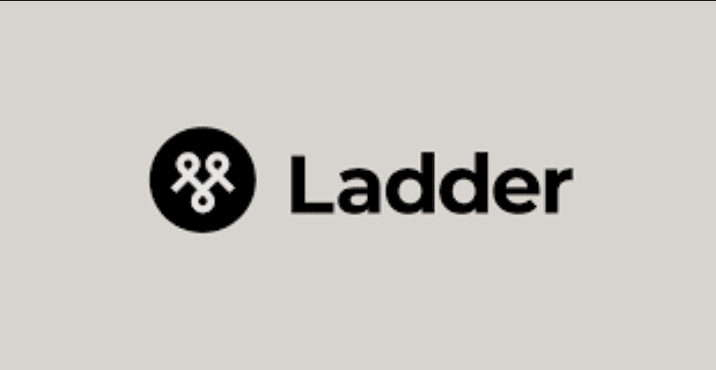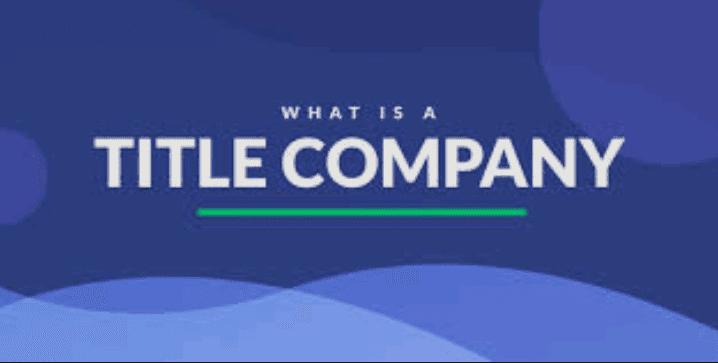Understanding Ladder Life Insurance: A Comprehensive Guide
Ladder life insurance is a term life insurance policy that is designed to provide coverage for a specific period of time, typically 10, 15, 20, or 30 years. What makes ladder life insurance unique is that it allows policyholders to purchase multiple policies with different coverage amounts and term lengths, creating a “ladder” of coverage that aligns with their changing needs over time.
When it comes to protecting your loved ones and securing their financial future, life insurance plays a crucial role. However, with the myriad of options available in the insurance market, it can be overwhelming to decide which policy suits your needs best. One option that has gained popularity in recent years is ladder life insurance.
In this article, we will provide you with a comprehensive guide on ladder life insurance, including what it is, how it works, its benefits, and considerations to keep in mind.
What is Ladder Life Insurance?
Ladder life insurance is a term life insurance policy that is designed to provide coverage for a specific period of time, typically 10, 15, 20, or 30 years. What makes ladder life insurance unique is that it allows policyholders to purchase multiple policies with different coverage amounts and term lengths, creating a “ladder” of coverage that aligns with their changing needs over time.
How Does Ladder Life Insurance Work?

Ladder life insurance works by allowing policyholders to customize their coverage based on their life stage and financial goals. The policyholder can purchase multiple term life insurance policies with different coverage amounts and term lengths, typically with the same insurance carrier.
Each policy within the ladder is considered a separate policy, and they can be structured to start and end at different times to align with different financial obligations, such as a mortgage or college tuition payments.
For example, let’s say you are a young professional with a mortgage and a young family. You may start with a 30-year term life insurance policy with a higher coverage amount to protect your family and pay off your mortgage in case of your untimely death.
As you progress in your career and your financial obligations change, you may decide to add additional policies with shorter terms and lower coverage amounts to provide coverage during specific periods, such as when your children are in college or when you plan to retire.
As each policy within the ladder expires, you can choose to renew or convert the policy, depending on your needs and circumstances at that time. Renewing the policy involves extending the coverage for an additional term, usually at a higher premium due to increased age.
Converting the policy allows you to convert the term policy into a permanent life insurance policy, such as whole life or universal life insurance, without undergoing a medical exam or providing additional evidence of insurability.
Benefits of Ladder Life Insurance
Customizable Coverage: Ladder life insurance provides flexibility to customize your coverage based on your changing needs over time. You can start with a higher coverage amount during your early years when you have more financial obligations and reduce it as you pay off debts, accumulate savings, or when your dependents become financially independent.
Cost-Effective: Ladder life insurance can be cost-effective compared to purchasing a single large policy for the entire coverage amount. By spreading the coverage across multiple policies, you can avoid overpaying for unnecessary coverage and save on premiums.
Easy to Manage: Managing a ladder of term policies with the same insurance carrier can be straightforward and convenient. You only need to keep track of the expiration dates of each policy and decide whether to renew or convert them based on your needs and circumstances at that time.
Convertibility Option: Ladder life insurance policies often come with a convertibility option, which allows you to convert the term policies into permanent life insurance without undergoing a medical exam or providing additional evidence of insurability. This can be beneficial if you want to secure lifelong coverage beyond the term period.
Considerations for Ladder Life Insurance
Coverage Amount: Consider how much coverage you need to protect your loved ones financially. Factors to consider may include your outstanding debts (such as mortgages, loans, etc.), your income replacement needs, and your family’s future financial goals (such as education expenses, retirement savings, etc.). Make sure the coverage amount is sufficient to meet your needs.
Term Length: Ladder life insurance offers various term lengths to choose from. Consider the term length that aligns with your financial goals and needs. For example,
if you have young children and want to ensure their financial security until they are adults, a 20- or 25-year term may be suitable. If you have a short-term financial obligation, such as a business loan, a shorter term like 10 years may be more appropriate.
Premiums: Ladder life insurance allows policyholders to adjust their coverage and premiums over time. However, it’s important to understand how premium adjustments work and how they may affect your policy. Lowering your coverage may reduce your premiums, but it will also decrease your death benefit.
Additionally, premiums for ladder life insurance may increase as you age or if you have any health changes, so consider the potential premium changes over the life of the policy.
Convertibility: Ladder life insurance policies typically come with a convertibility feature, which allows you to convert your term policy into a permanent life insurance policy, such as whole life or universal life, without a medical exam.
This can be beneficial if your needs change over time, and you want to extend your coverage beyond the term length. However, converting may also result in higher premiums, so consider the costs and benefits of conversion.
Health and Lifestyle Factors: Like other types of life insurance, ladder life insurance premiums are based on factors such as your age, health, and lifestyle.
Be prepared to undergo a medical underwriting process, which may include a health questionnaire, medical exams, and possibly other tests, depending on the coverage amount and the insurer’s requirements. Your health and lifestyle factors may affect your eligibility for coverage and the cost of premiums.
Insurer’s Reputation: It’s essential to choose a reputable insurer when purchasing ladder life insurance. Research the financial strength, customer service reputation, and claims-paying history of the insurer. Look for ratings and reviews from independent rating agencies and consumer reviews to gauge their reliability and trustworthiness.
Riders and Additional Features: Ladder life insurance policies may come with additional features or riders, which are optional add-ons that can provide additional benefits or customization options.
Examples include accelerated death benefit rider, which allows you to access a portion of the death benefit if you become terminally ill, and waiver of premium rider, which waives your premiums if you become disabled.
Consider the riders and additional features offered by the insurer and evaluate if they align with your needs and budget.
Lladder life insurance can offer flexibility and customization to meet your changing life insurance needs. Consider the coverage amount, term length, premiums, convertibility, health and lifestyle factors, insurer’s reputation, and any riders or additional features when evaluating ladder life insurance options to make an informed decision.
It’s also recommended to work with a qualified insurance professional to help you understand the policy’s details and determine the right coverage for your specific situation.
Read Also: Understanding TRICARE West: A Comprehensive Guide to Military Healthcare
Digital Life Insurance
The world of insurance has been revolutionized by digital technology, and one area that has seen significant transformation is life insurance. With the rise of digital life insurance, traditional insurance processes are being streamlined, making life insurance more accessible, convenient, and efficient for policyholders.
Digital life insurance, also known as online life insurance or insurtech, refers to the use of digital platforms, algorithms, and data analytics to offer life insurance policies to customers.
Digital life insurance companies operate primarily online, allowing customers to purchase policies, submit claims, and manage their policies digitally through web portals or mobile apps. These companies leverage cutting-edge technology to simplify the traditional life insurance process and provide a seamless customer experience.
One of the main benefits of digital life insurance is its convenience. Traditional life insurance policies often require lengthy paperwork, medical exams, and in-person meetings with agents, which can be time-consuming and cumbersome. Digital life insurance, on the other hand, eliminates many of these hurdles by offering a simplified and automated application process.
Customers can apply for life insurance online by providing basic information, such as age, health history, and coverage amount, and receive a quote within minutes. Some digital life insurance companies even offer instant approval for certain policies, eliminating the need for lengthy underwriting processes.
Another significant advantage of digital life insurance is its affordability. By leveraging data analytics and algorithms, digital life insurance companies are often able to offer policies at competitive prices.
These companies use algorithms to assess risk factors and determine premiums based on various data points, such as age, health status, lifestyle habits, and family medical history. This allows for more accurate pricing, which can result in lower premiums for policyholders.
Additionally, digital life insurance companies typically have lower overhead costs compared to traditional insurance companies, which can further contribute to cost savings that are passed on to policyholders.
Furthermore, digital life insurance offers greater flexibility and customization compared to traditional life insurance. Digital insurance platforms typically offer a range of policy options, allowing customers to choose coverage amounts, policy terms, and riders that meet their specific needs.
Some digital life insurance companies even offer modular policies that can be adjusted or customized throughout the policy term to adapt to changing life circumstances.
This flexibility allows policyholders to tailor their coverage to their unique requirements, making digital life insurance more customer-centric and responsive to individual needs.
In addition to the convenience, affordability, and flexibility, digital life insurance also offers a user-friendly experience. Most digital life insurance platforms are designed with a user-friendly interface, making it easy for customers to navigate and manage their policies online.
Customers can access their policy information, view premiums and benefits, make changes to their coverage, and submit claims conveniently from their devices.
Many digital life insurance companies also offer 24/7 customer support through various channels, such as chatbots, email, or phone, providing prompt assistance to policyholders whenever needed.
However, it’s worth mentioning that digital life insurance also has some limitations. One of the main concerns is the lack of personalized advice and human interaction. Traditional life insurance agents often provide personalized guidance and advice to help customers understand their coverage needs and make informed decisions.
With digital life insurance, customers may not have the same level of personal attention and guidance, which can be a drawback, especially for those who are new to life insurance or have complex insurance needs.
Moreover, digital life insurance heavily relies on data and algorithms for underwriting and pricing, which can raise concerns about data privacy and security. Customers need to provide personal and sensitive information online, such as health history and financial details, which may raise privacy concerns.
Read Also: Best Life Insurance: A Review of Sproutt
Competitive Life Insurance Rates
Life insurance is an essential financial tool that provides protection and peace of mind to individuals and their families. It ensures that loved ones are financially secure in the event of the policyholder’s death. When it comes to purchasing life insurance, one of the most important factors to consider is the rate or premium of the policy.
Competitive life insurance rates are a key consideration for policyholders, as they impact the affordability and value of the policy. In this article, we will explore the concept of competitive life insurance rates and how they can benefit policyholders.
Life insurance rates are determined by various factors, including the age, health, and lifestyle of the policyholder, as well as the coverage amount and type of policy. Insurance companies use actuarial calculations and risk assessments to determine the premium amount.
Competitive life insurance rates refer to rates that are lower or more favorable compared to other insurance companies in the market offering similar coverage. Here are some reasons why competitive life insurance rates are important for policyholders:
Affordability: Competitive life insurance rates make life insurance more affordable for policyholders. Lower premiums mean that policyholders can obtain the desired coverage without having to pay excessive amounts. This allows individuals to budget effectively for their life insurance premiums, ensuring that they can maintain the policy without financial strain.
Value for money: Life insurance is a long-term financial commitment, and policyholders want to ensure that they are getting the best value for their money. Competitive life insurance rates allow policyholders to obtain a higher coverage amount or more comprehensive policy features for the same premium compared to other insurance providers.
This means that policyholders can maximize the benefits of their life insurance policy while keeping the premiums within their budget.
Flexibility: Competitive life insurance rates provide policyholders with flexibility in choosing the coverage that best suits their needs. With lower premiums, policyholders have the option to customize their coverage based on their unique financial situation and priorities.
This allows policyholders to tailor their life insurance policy to their specific needs, such as protecting their family, paying off debts, or leaving a legacy.
Better comparison shopping: Competitive life insurance rates encourage policyholders to shop around and compare different insurance providers. By obtaining quotes from multiple insurance companies, policyholders can compare the premiums, coverage amounts, and policy features offered by different insurers.
This enables them to make an informed decision and choose the best life insurance policy that meets their needs and budget.
Increased competition: The presence of competitive life insurance rates in the market promotes healthy competition among insurance companies. Insurance providers strive to offer competitive rates to attract policyholders and retain existing customers.
This competition can lead to more favorable rates and policy options for policyholders, as insurance companies continuously improve their offerings to stay competitive.
Long-term savings: Competitive life insurance rates can result in long-term savings for policyholders. Lower premiums mean that policyholders can allocate more funds towards other financial goals, such as retirement savings or investment opportunities.
This can help policyholders build wealth over time and achieve their financial objectives while maintaining the protection of their life insurance policy.
In conclusion, competitive life insurance rates are an important consideration for policyholders when purchasing a life insurance policy. They provide affordability, value for money, flexibility, and better comparison shopping opportunities, while also promoting healthy competition among insurance companies.
Policyholders should carefully research and compare different insurance providers to find the most competitive life insurance rates that meet their unique needs and budget. It is advisable to work with a licensed insurance professional to understand the intricacies of life insurance rates and select the policy that best suits one’s individual circumstances.
By choosing a life insurance policy with competitive rates, policyholders can ensure that they are getting the best value for their money and protecting their loved ones’ financial future.
Read Also: All you need to know about Hypoallergenic Dogs



